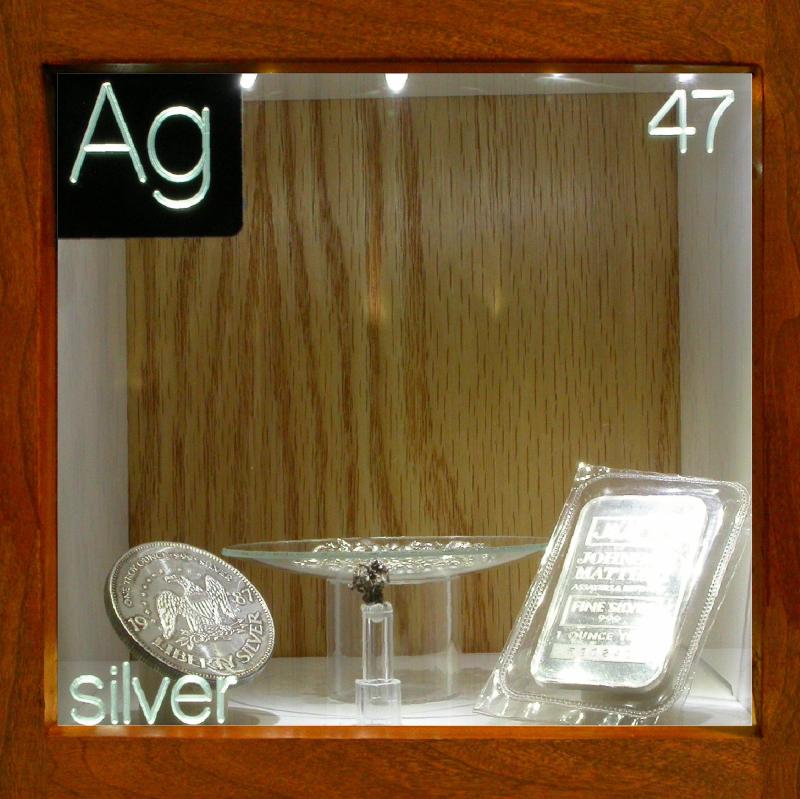Home Size: 1 2 3 4 5 6 7 8 9
|
 |
| A soft, bright shiny metal which is highly malleable and widely used in jewelry, industry and photography. It is stable in air but tarnishes if exposed to sulphur.
|
|
|
 |
Splatter pieces.
These pleasing shapes were produced by pouring drops of molten silver onto a block of ice. Silver is not easy to melt. You need a blow torch.
Source: specially produced
Size: up to 0.25"
Purity: > 99.9%
|
|
 |
Rectangular ingot.
Silver has long been used as a store of economic value... ie bullion. Compared to gold it is really quite inexpensive. The "spot price" of this 1 troy ounce (31g) bar is just under $6 at the time of writing. The same weight of gold would be half the size (because gold is twice as dense as silver) and 70 times more expensive!
Source: Johnson Matthey
Size: 2"
Purity: 99.9%
|
|
 |
Round ingot.
In the two decades or so following World war II silver disappeared from the worlds circulating coinages and is now only used for commemorative and bullion coinage. Bullion coins are struck as a convenient way to purchase small quantities of precious metals (and to make a profit for the issuing government). The United States first silver bullion coin, the $1 silver eagle, was struck in 1986 and has been issued annually ever since. Many private companies also issue silver bullion pieces, either as ingots (or art bars) or coin-like pieces, often referred to as rounds. These pieces exist with many different designs, some being replicas of issued coin designs aimed at collectors. This 1987 dated piece is from The Liberty Mint of Utah.
Source: Coin Shop
Size: 1.5"
Purity: 99.9%
|
|
 |
Native silver.
Like its fellow transition metals, copper and gold, silver occurs in nature in the free state but is less common in this form than gold because of its greater reactivity. It occurs as arborescent (tree-like) or dendritic (fern-like) crystals, wires (which often look like they were created by an artist), leaves or sheets and massive. Classic localities for fine silver specimens include Kongsberg, Norway, The Black Forest, Germany and more recently Uchucchacua, Peru. Most collectors have to settle for small examples of native silver because well formed specimens, especially from famous localities, can easily run into hundreds or thousands of dollars, many many times the bullion value of the metal they contain. The crystalline silver displayed here is from the now barren Alva Silver Mine in Scotland, one of the few precious metal mines to have existed in the British Isles.
Source: Mackay mineral collection
Size: 0.2"
Purity: >95%
|
|
|

